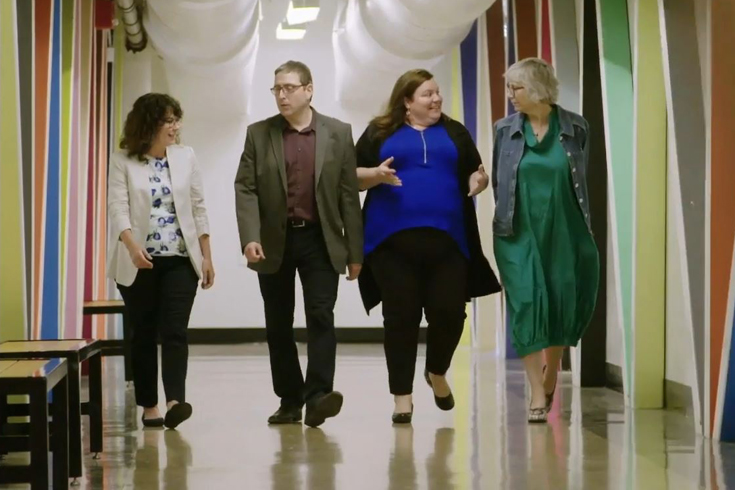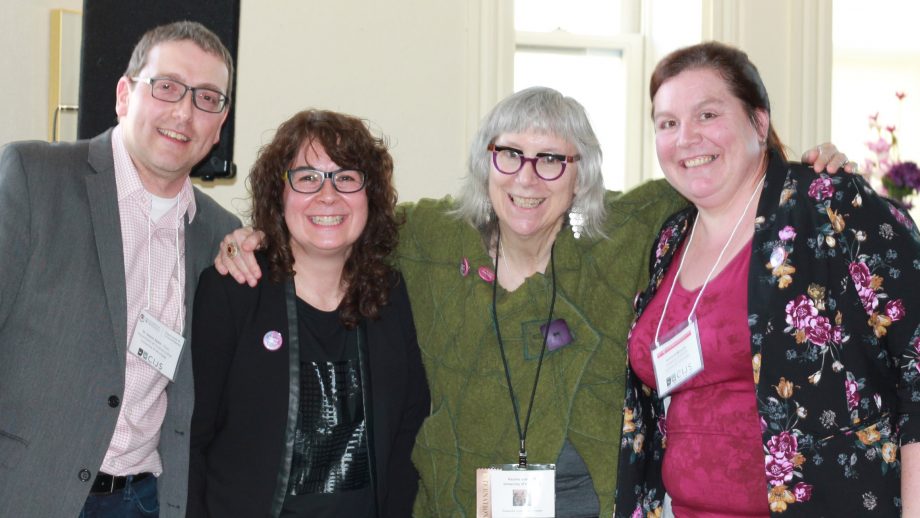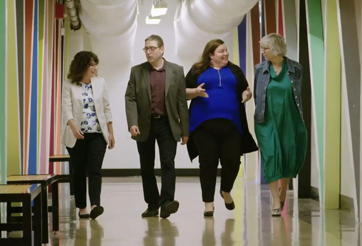
The Frozen Justice video series is a collaborative project between researchers from UWinnipeg, Ontario Tech University, and the University of Manitoba. Pictured left to right: Drs. Sonia Bookman, Steven Kohm, Andrea Braithwaite, and Pauline Greenhill. ©Eagle Vision Inc.
Frozen Justice: Canadian Crime Films, Culture and Society is a SSHRC-funded project combining expertise in criminal justice, cultural sociology, women’s and gender studies, folklore studies, and critical media studies to explore Canadian crime films from diverse perspectives.
It is more important now than ever to consider the power of film and TV to shape ideas about crime and justice in both socially positive and negative ways
Dr. Steven Kohm
University of Winnipeg professors Dr. Steven Kohm and Dr. Pauline Greenhill, University of Manitoba associate professor Dr. Sonia Bookman, and Ontario Tech University associate teaching professor Dr. Andrea Braithwaite have worked closely with Eagle Vision to create this educational video series.
“Season 2 was a lot of fun to create, because I got to play around a bit with the good cop, bad cop scene, as well as run up and down the Centennial Hall fire escape several times in a heavy leather coat in 30-plus degree heat playing the role of a 1970s cop action hero,” said Kohm, who played a key role in Episode 1: The Case of the Canuck Cop Film.
Serious issues raised
While he had a lot of fun bringing his research to life with his foray into acting, Kohm stresses the serious subject matter addressed in the series.
“We explore a lot of serious issues relating to justice, like racial inequality, and the impact of colonialism on the justice system historically and continuing today,” he said. “It is more important now than ever to consider the power of film and TV to shape ideas about crime and justice in both socially positive and negative ways.”
In Season 1, which launched in spring 2019, Kohm’s research focused on the way Canadian criminal courts, police, and prisons are depicted in film and other media. Bookman explored how crime films portray Canadian cities and their inhabitants, shaping the way we perceive particular places, people, and crime. Greenhill analyzed the ways fairy tales, traditional culture, and media represent different ideologies of justice, and Braithwaite investigated gender in pop culture with a focus on the amateur female sleuth.
Causes and consequences of crime
Season 2 continues this exploration by looking at the causes and consequences of crime in Indigenous communities, how certain cities are mythologized as dangerous, how Canadian movies represent the police, and what these films tell us about Canadian culture and society.
“I’ve personally learned a great deal from getting to know the social and cultural criminology literature – and how that literature, and our perspectives on justice, are making their way into fairy-tale studies,” said Greenhill.
She looks forward to sharing the research with university colleagues far and wide.
“I think getting these videos out now is particularly valuable, because so many university courses are online and professors are looking for good quality content,” she said. “The topics are incredibly timely.”
The video series was made possible thanks to the support of the Social Sciences and Humanities Research Council of Canada (Grant 435-2016-1078). The research team is planning their next series, examining how crime is portrayed on Canadian television.
View the series, as well as an accompanying reading list, online at Frozen Justice: Canadian Crime Films, Culture and Society.


